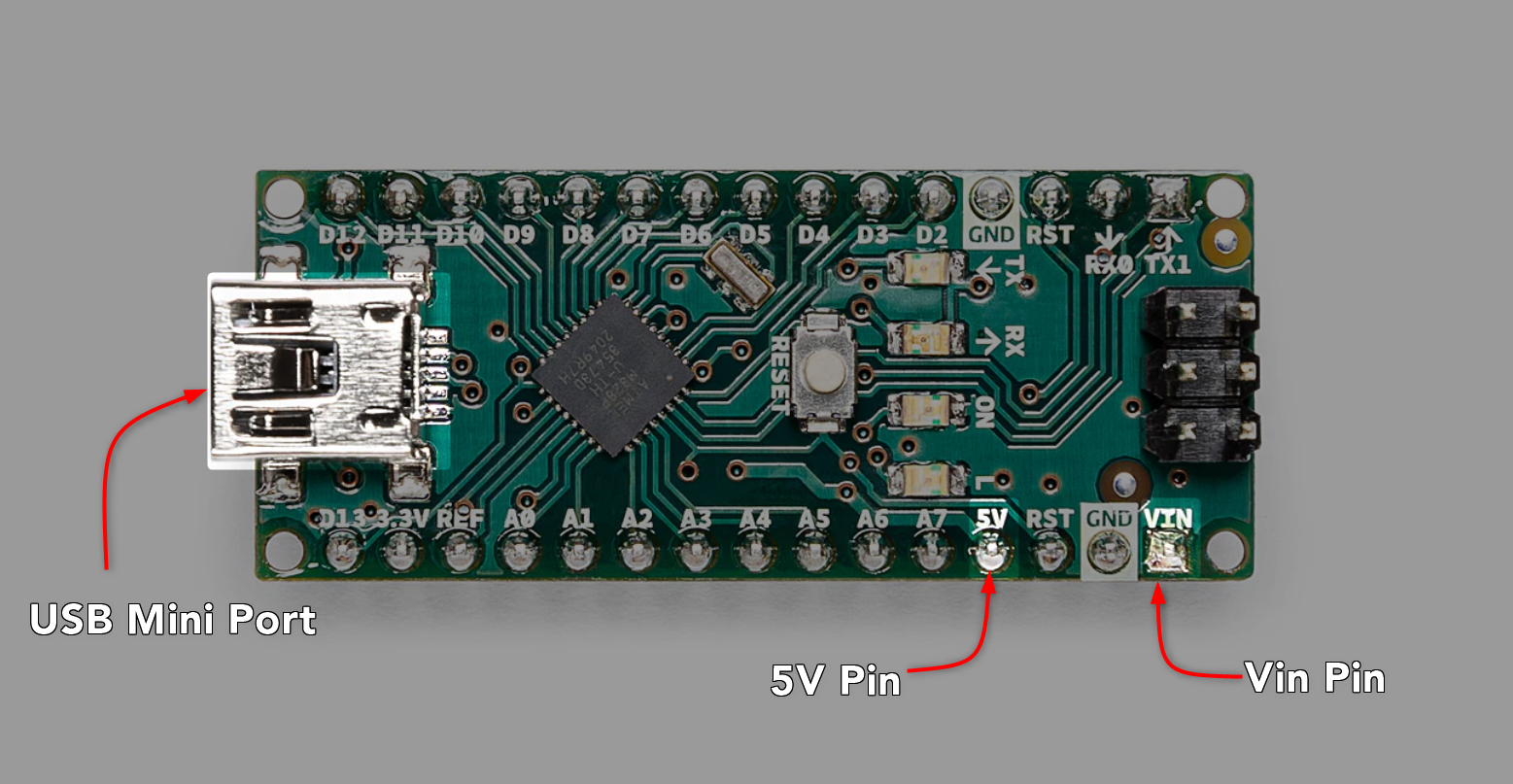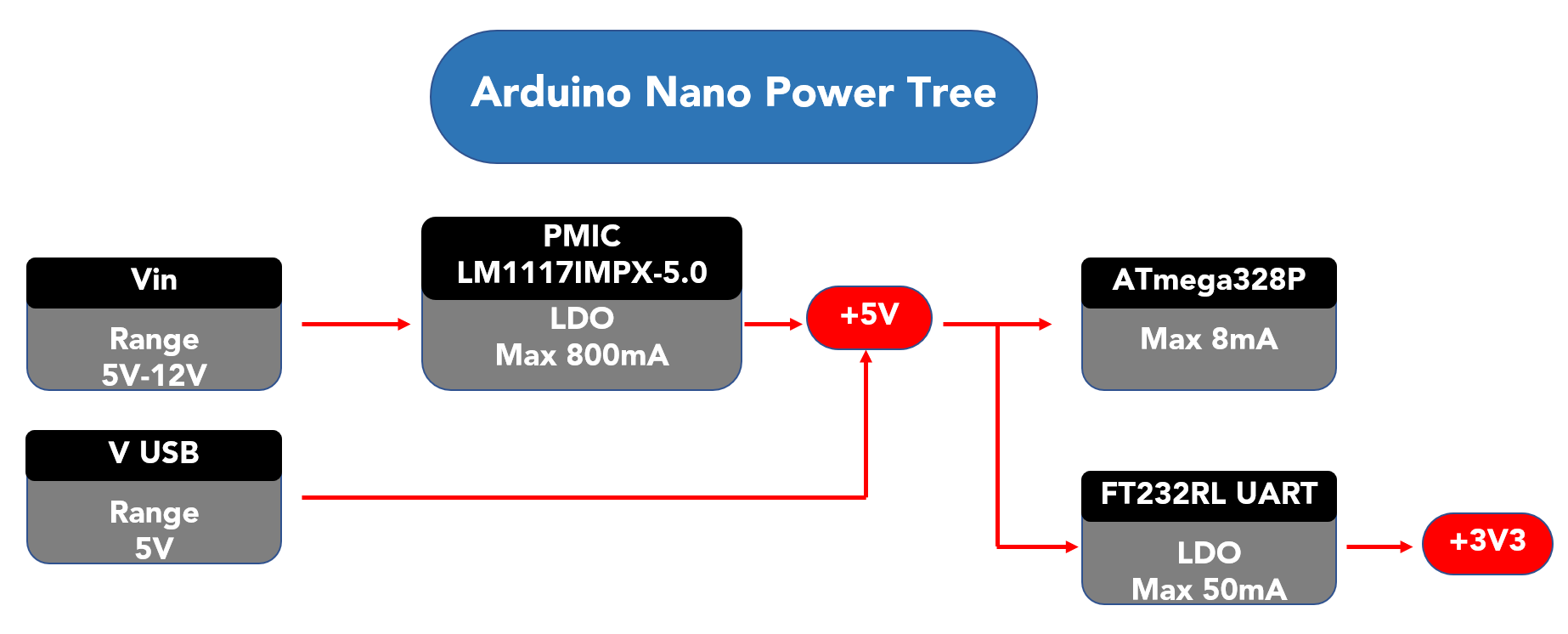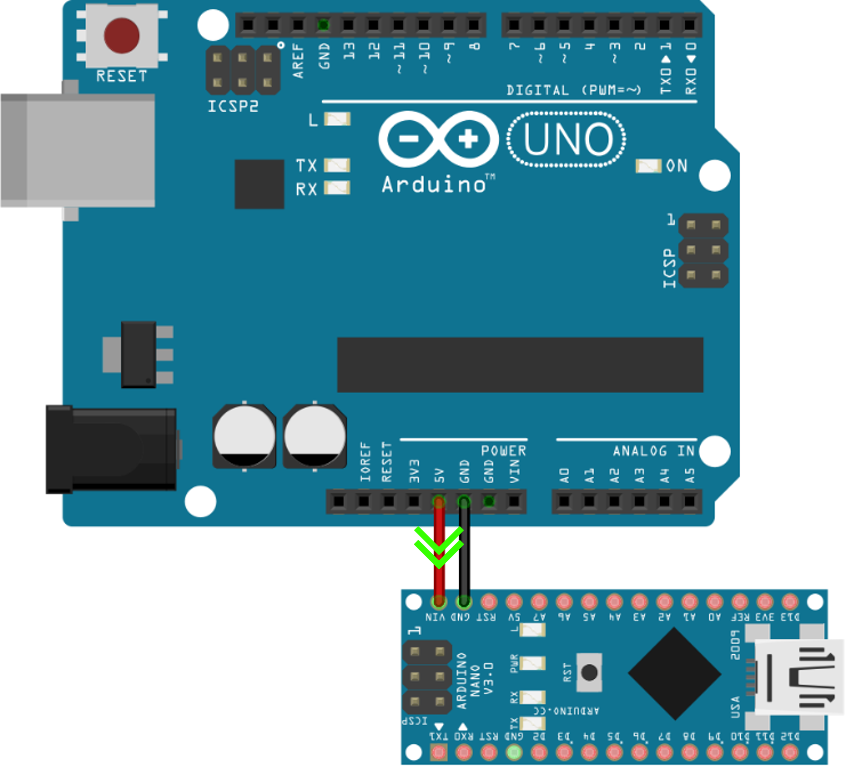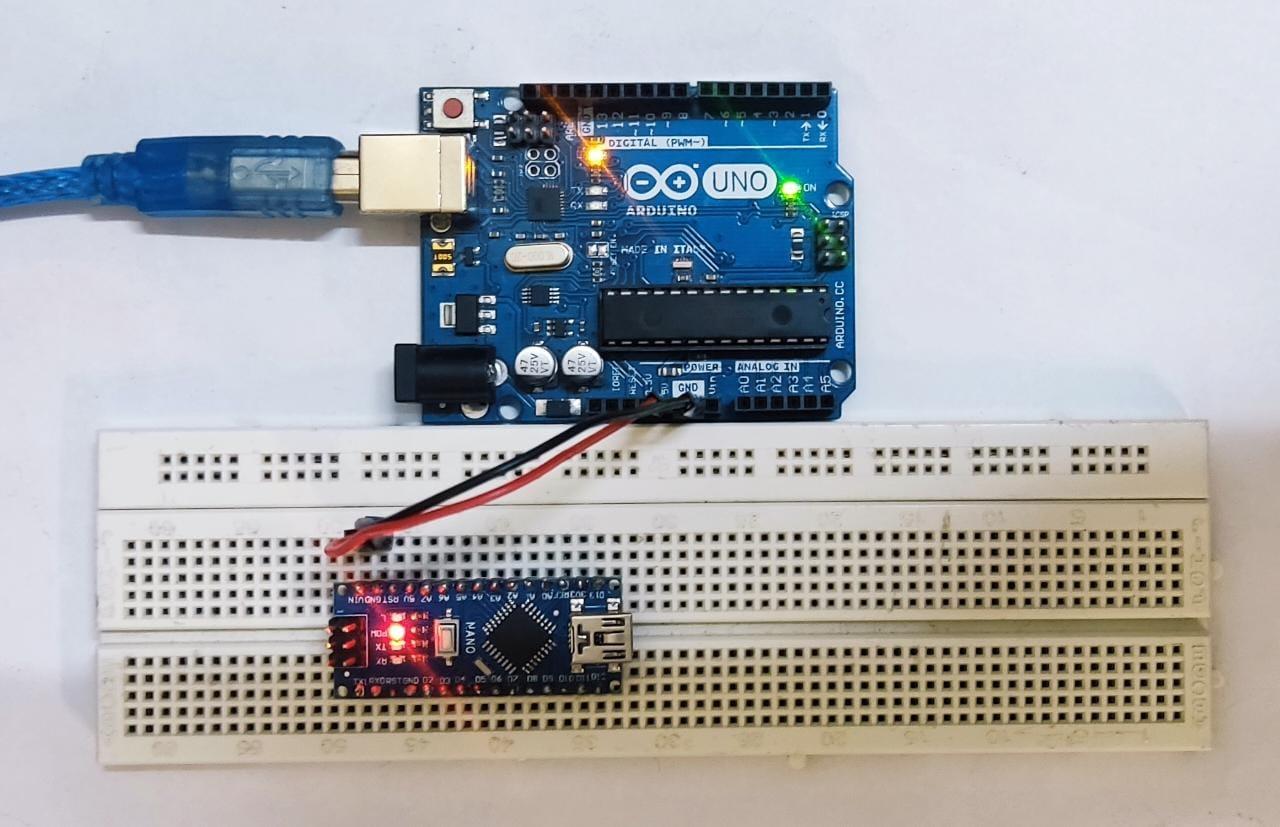Can We Power Arduino Nano Through Vin Pin
Yes, Arduino Nano can be powered up using the Vin pin. The Vin pin in the Arduino has dual functionality. This pin can act as an input source for Arduino Nano using external regulated supply and output constant 5V when Arduino Nano is powered using a USB port. It is typically used to power the Nano from an external power source, such as a DC power adapter or a battery.
Vin pins increase the compatibility of Arduino boards that don’t have DC barrel jack such as Arduino Nano boards. Using this pin any external regulated supply can be connected with an Arduino board.
| Board | Vin Voltage Range |
| Arduino Nano | 5V-12V |
Note: It is important to note that the VIN pin bypasses the voltage regulator LM1117 on the Nano, so if you are using a power source with a voltage outside of the recommended range (5V), you may need to use a voltage regulator to ensure that the voltage is within the acceptable range for the Nano.
LM1117 voltage specifications:
| Voltage Regulator | Output Voltage | Max Input Voltage | Max Output Current |
| LM1117 | 5V | 20V | 800mA |
This article covers all three ways to Power Arduino Nano.
Arduino Nano Power Sources
Arduino Nano has different power options. Having multiple power sources increases Arduino working and compatibility. Arduino Nano can be powered up using the:
1: USB Mini Cable
USB mini port is the most reliable and efficient way of powering Arduino Nano as it provides us with constant 5V which can be directly given to Arduino Nano microcontroller and other peripherals.
2: VIN Pin
VIN pin can also be used as a power source for Arduino Nano. Vin pin works dual way. This pin is connected to an onboard voltage regulator which means it can not only give us 5V but also can power Arduino Nano through external power supply. This pin can take voltage up to 16V.
It’s recommended to not apply voltage greater than 12V at this pin because excess voltages will be lost as heat during conversion.
3: External regulated 5V
Last power source on the list is a 5V pin. This is by far the most complicated way to power a Nano board. This is because the 5V pin bypasses the LDO regulator and any slight increase in voltage will damage Arduino permanently. This happens usually because of reverse current flow from output to input of the LDO LM1117 regulator.
Arduino Nano Power Tree
Following image shows the Arduino Nano power distribution. Vin pin voltage is given to the on -board voltage regulator which then requires it and gives constant 5V to the onboard microcontroller board.
Powering Arduino Nano Using Arduino Uno through Vin Pin
Now we will power the Arduino Nano using the constant 5V coming from the Arduino Uno board. Connect the 5V Uno pin with the Vin pin of the Nano board. After that connect the GND pins of both boards together.
Schematic
Following is the schematic image of Arduino Nano powering using the Vin pin.
Hardware
In hardware we can see that the power LED of the Arduino Nano is turned on using the 5V coming from the Uno board.
This article covers all three ways to Power Arduino Nano.
Conclusion
Arduino Nano is a versatile board and has multiple power sources. The Vin pin of Arduino Nano can also be used to power it using external regulated supply. In this article Arduino Nano is powered using the 5V coming from Arduino Uno pin. For a more detailed description read the article.





